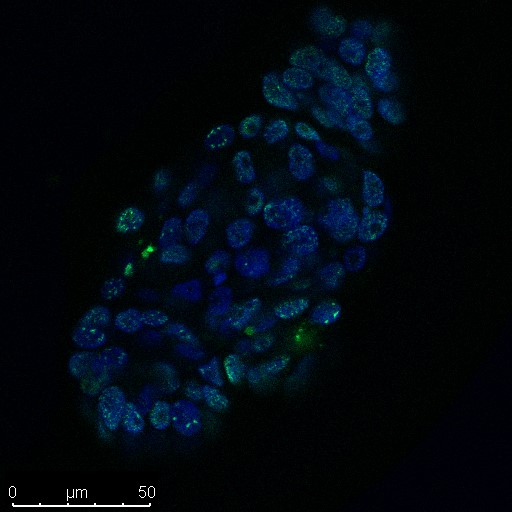Researchers at the Hubrecht Institute have made significant advancements in head and neck cancer treatment options by utilizing patient-derived organoids. These organoids have shown potential in predicting patient response to radiotherapy and can help identify or validate new treatment options.
In a recent study by Millen et al., published in Med, the researchers revealed that the response of head and neck cancer organoids to radiotherapy correlated with the patients' response. This suggests that organoids could help personalize treatments and ensure the most effective therapy is chosen for each patient. The study also found that when a panel of organoids was exposed to multiple new drugs, some drugs successfully killed most organoids, indicating that these organoid collections can be used to explore novel therapies for head and neck cancer.
Else Driehuis has been part of the Organoid Group at the Hubrecht Institute and was involved in the project since the start. She emphasizes the importance of the Oncode Clinical Proof of Concept (CPOC) grant in enabling the team to evaluate the value of organoid technology for patients. She says: "The Oncode CPOC grant allowed us to evaluate the value of organoid technology for patients. In the past, we figured out the "recipe" for growing the head and neck cancers of patients and found hints that organoid response to treatment indicated the response of the patient. We wanted to study correlation between organoids and patient response in a larger cohort of patients and at that time reached out to Oncode.”
She continues: “The CPOC grant allowed us - as a research lab - to perform this first step towards clinical implementation, allowing the technology to advance within the hands of the people who built it. I believe this nurture of technology is important as the technology at this time still requires finetuning. This way, the researchers can learn from the challenges they are presented with when scaling up their technology and go back to the drawing board and make the required changes right away. That way, I think we speed up the route to clinical implementation of technology. I'm very happy we received this opportunity and am proud of the end result.”
First author Rosie Millen explains: “The Oncode CPOC grant enabled us to create a diverse biobank of head and neck organoids where we could really investigate the potential of organoids to predict response to radiotherapy and genetically manipulate the organoids to explore the potential of genetic biomarker prediction using targeting therapies. This adds to the growing field of organoids, with the potential to one day impact clinical decision making. Importantly, the Oncode CPOC allowed us to work within a multidisciplinary team, alongside surgeons, medical oncologists, radiologists and scientists to undertake this research. "
Her colleague Willem de Kort concludes: “The CPOC grant ensured the possibility in appointing one PhD student on the clinical side of this project. This led to a boost of inclusions and revealed the challenges of this kind of research more broadly. Completing this project brings the step towards clinical implementation one step closer.''
The results of this study offer hope to head and neck cancer patients, who currently face limited treatment options and high relapse rates. The use of organoids to predict patient responses and explore new treatments could revolutionize how head and neck cancers are managed in the future.
